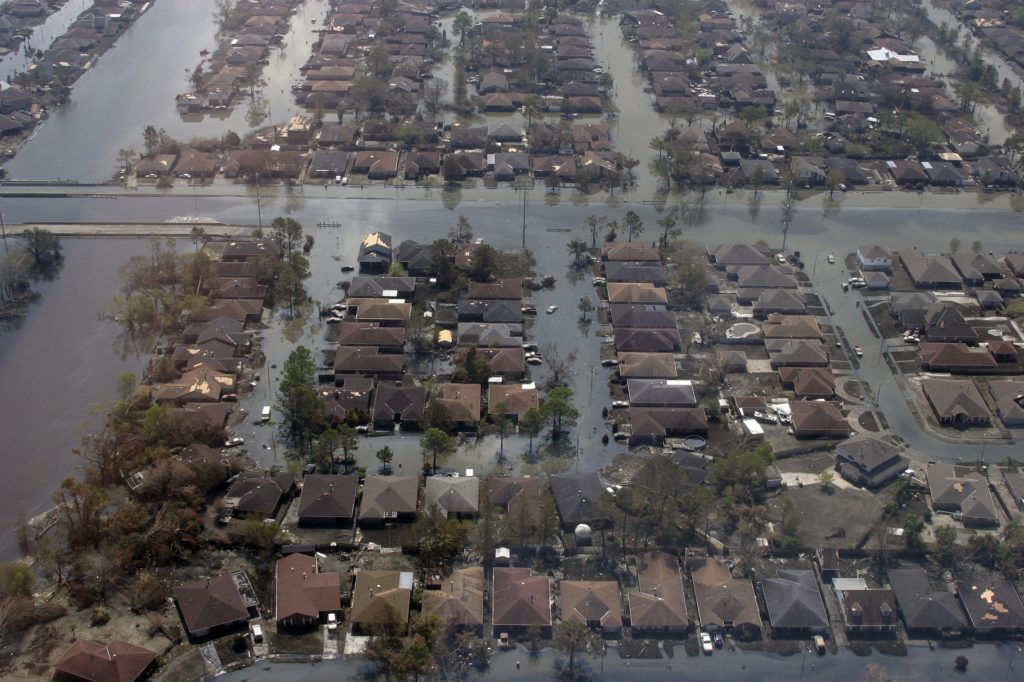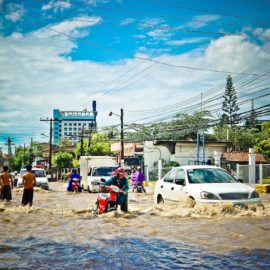
Flooding is terrible but what if you can’t afford the flood insurance? Some may be in that position with the new rates.
Many homeowners looking to buy new policies under revamped rates for the National Flood Insurance Program are getting sticker shock, with prices for even low-risk areas in some cases running three times higher than the current premiums. The rates — set to start going into effect Oct. 1 for new policies — have prompted members of Louisiana’s congressional delegation to ask FEMA for a delay, arguing the crushing premium hikes are unfair and could destabilize the program by prompting many people to cancel their policies. Ross Shales, of Expert Insurance Services in Metairie, said he compared old rates for seven homeowners across Louisiana — all about $572 each year — with what they would pay under the new rules. The policies would now range between $1,292 and $2,413 annually, he said. That’s higher than FEMA’s earlier estimates that roughly 70% of flood insurance policyholders in Louisiana would see increases up to $120 each year and fewer than 3% of policyholders would see increases of $240 per year or more. “We’re seeing some pretty substantial increases,” Shales said. “People are not going to buy those policies, and if they don’t have flood insurance you’re going to have a whole bunch of people exposed.” .
theadvocate.com
I am paying more than $572 a month so I don’t want to see the new rates! The levees held so should that be a factor to include as a cost lower?
The flood maps were not changed during the process, and it’s unclear how big the next hike may be in April 2022, when existing flood policies are renewed. A bipartisan effort among members of the House and Senate is afoot to delay enactment of the new flood premiums. A letter from U.S. Sens. Bill Cassidy and John Kennedy noted that nearly 80% of homeowners will see a cost increase for insurance. Estimates are the price hike will cause nearly 900,000 people, or almost 20% of policyholders, to drop flood insurance over the next 10 years, the senators said, citing internal FEMA documents. “We’re coming at all sides to ensure that those who have to pay these premiums are supported, particularly those who were recently flooded,” Cassidy said in a recent interview. “We need to be talking about how to make the program more affordable, more accessible, more sustainable. Not, how do we destroy the program.”
Thanks to the senators for the letter and we do need to make it more affordable. However, even 18% increases are a lot as inflation is not nearly that high.
There is supposed to be an 18% cap on premium hikes for existing policies with National Flood Insurance Program policies. But the increases cited by Shales, the insurance agent, are between 100% and 400%, and he noted that flood insurance is not required by the mortgage lender in those cases. Those properties are in “preferred” flood zones, low-risk areas where cheaper policies are typically offered. For other properties in known flood plains or near bodies of water, the same policy could cost tens of thousands of dollars a year. The flood policies — purchased separately from regular property casualty insurance — can cover up to $250,000 for homes, with an additional $100,000 for contents. One of Shales’ clients in Mandeville saw savings under the new premiums during a quote check. But everybody else was offered higher rates, he said. The annual premium for a 2,386-square-foot home near City Park in New Orleans in a minimal-to-moderate flood risk zone increased from $572 to $1,715 . A similar policy in the same type of zone for a 1,800-square-foot home in Walker rose from $572 to $1,857. In Kenner, insurance prices for a 1,600-square-foot home in a moderate flood-risk zone rose from $572 to $2,248. “Those new prices are going to really start affecting the housing market,” Shales said.
It will impact the housing market as well as those who might desire to move here. It might drive people away.
Amena Henville said she was shocked to see a flood insurance quote of almost $3,000 for her Gretna home. The property is considered to be at moderate hazard for flooding, so insurance is not required by mortgage companies. Henville let her policy lapse because she was switching insurance agents this year so her policy is considered new. She’s never flooded before and typically paid about $400 in premiums each year. “I didn’t believe them, and I got a quote from another agency but it was pretty much the same,” Henville said. In an effort to save money, she is planning to spend $300 on a survey to show her property is higher than the flood zone. Henville said that if the quote is still $3,000 after the survey, she doesn’t think she will get flood insurance. “I am intimately aware of the risk,” she said. “It’s crazy.”
It is a risk. We came off lightly with Ida but others in our area did not. I don’t want to lose the house with no coverage as well as the furniture.
The old rules used FEMA data, flood insurance zones, base flood elevation, foundation type and the annual chance of flooding to determine premiums. The new rules include more sources of information, such as third-party business data, the cost to rebuild a property, distance to bodies of water, flooding type, ground elevation, height of the first floor and how often floods strike a particular community. FEMA says 2.8 million National Flood Insurance Program quotes have been generated under the new program nationwide. “We are certainly hearing of examples where premiums are at $5,000 or $10,000, and it seems folks are thinking that these examples are typical and they’re not,” said David Maurstad, senior executive of the National Flood Insurance Program.
I don’t know if what FEMA says gives me any comfort. Even smaller increases would hurt, especially for those on fixed incomes.
FEMA said the high premiums account for less than 1% of all quotes but acknowledged that some policies, especially new ones, may involve “dramatic differences” in cost compared to thEach year since the program began decades ago, premiums always went up for everyone, Maurstad said. For the first time some policyholders will see their premiums go down, he added. “The new rating methodology is correcting longstanding inequities in the current pricing scheme, and we can no longer to ignore the fact that some of our policyholders have been unjustly subsidizing other policyholders,” Maurstad said. “Our new policies that are written in a different way of identifying risk than before.”
How many people will be impacted? If this is a nationwide plan it is also for those on the rivers as well as us with hurricane threats.
FEMA has said the rate changes are expected to impact 5 million policyholders nationwide, with 3.8 million paying higher premiums and 1.2 million seeing savings. Some experts argue that the reform is more equitable, especially for homes that are not as costly to repair if damaged by floods. “The system was based on these big blocks of risk and national averages,” said Laura Lightbody, project director for The Pew Charitable Trusts’ flood-prepared communities project. That meant if one single family home sat near a river and the other on top of a hill miles away, the homeowners were probably paying similar flood insurance premiums because they were in the same overarching zone, she said. Likewise, owners of a home that was more expensive to repair would have been paying the same premium as a home that cost less to fix, she noted. “This program is going to provide policyholders with a more unique price for their individual property,” Lightbody said.
At least they recognize some relocation might occur. But like all people movements some always move into threatened areas.
Lightbody said that while some people may balk at the higher rates, something needs to be done to ensure federal funding is used more efficiently. She noted that relocation “needs to be on the table.” “If we don’t start pricing risk, people are going to continue to move to these high risk areas and we are just going to grow the risk,” she said. But pressure to at least delay the price hikes is increasing. U.S. Reps. Garret Graves and Steve Scalise sent a letter to FEMA Administrator Deanne Criswell, noting a homeowner in Larose was quoted $5,531 for a new policy to start in October, an increase of 867% from a previous quote of $572. “These claims already seemed inconsistent with FEMA’s own documents,” the letter said. “It is not equitable for policyholders in Louisiana to be penalized by higher NFIP premiums because they sit at the bottom of the third-largest watershed in the world. Louisianians are expecting to see consistent rate increases for decades, and FEMA is not being transparent about it.”
As this discussion goes on, there are two disturbances leaving Africa that may develop into something aimed as somewhere. That is the threat – how many hit one area. Just ask Lake Charles.



